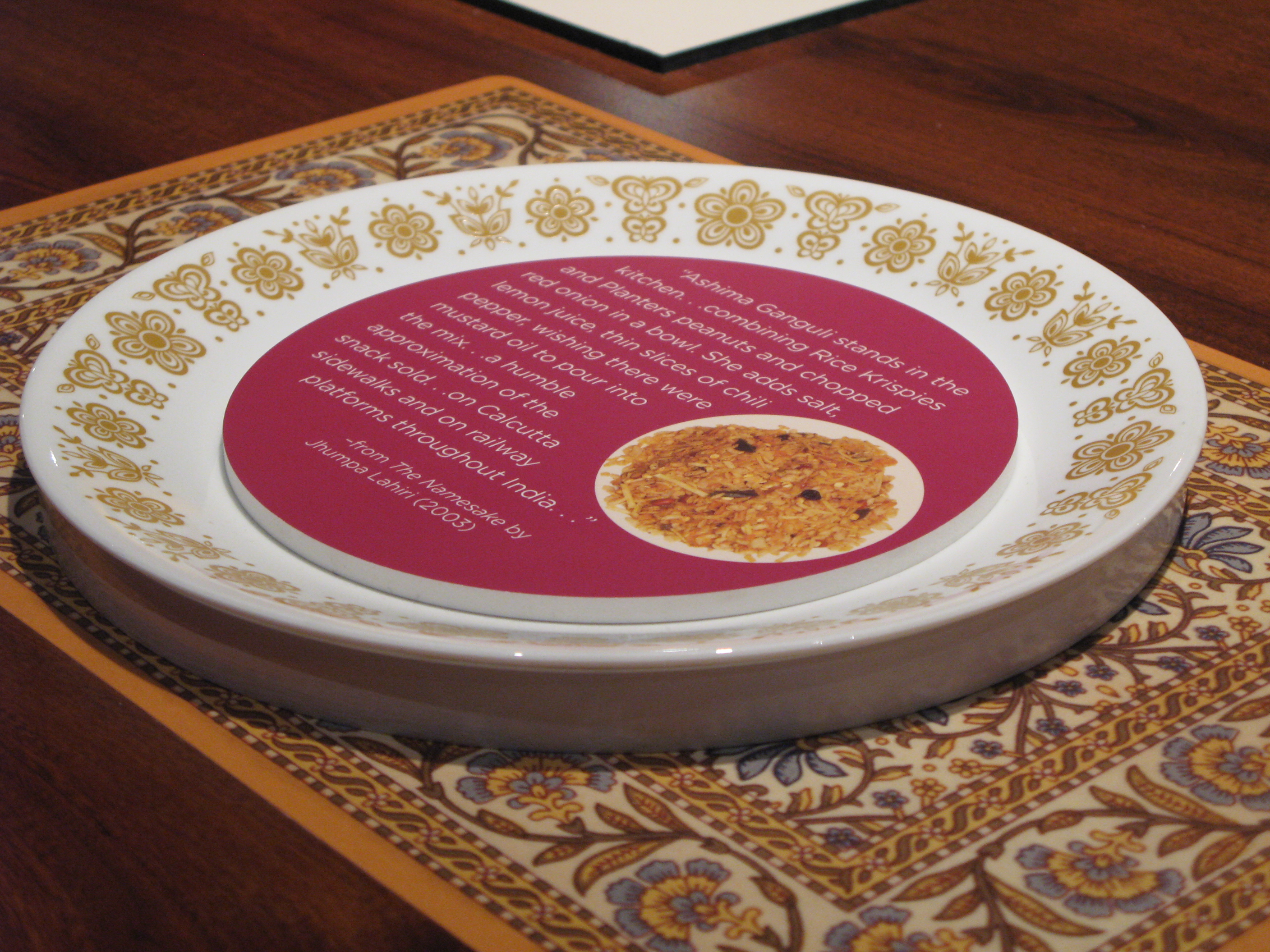
One in 100 Americans trace their roots to India, though you wouldn't know it to look at the nation's museums. According to Smithsonian curator Masum Momaya, until recently, the country's largest museum network held not a single item representative of the ethnic subgroup in its collection.
That's no longer true, thanks to a new, year-and-a-half-long exhibit at the National Museum of Natural History, "Beyond Bollywood: Indian Americans Shape The Nation." A traveling version will also tour the nation's libraries, community centers, and "even airports and shopping malls," according to Momaya.
Momaya spoke to The Huffington Post about why it took so long for this exhibit to happen and why there's a "mandate" for more like it.
Was it hard to convince the Smithsonian to take this on? On the contrary, the reaction was, ‘It’s about time.' People are really intrigued, for better or for worse, by Indian culture. Many people have Indian people in their lives -- friends, classmates, co-workers. And the Smithsonian has an amazing undersecretary for arts and culture -- Richard Kurin -- who has done a lot of scholarship in India and South Asia. Honestly, it was a tougher sell amongst the Indian community.
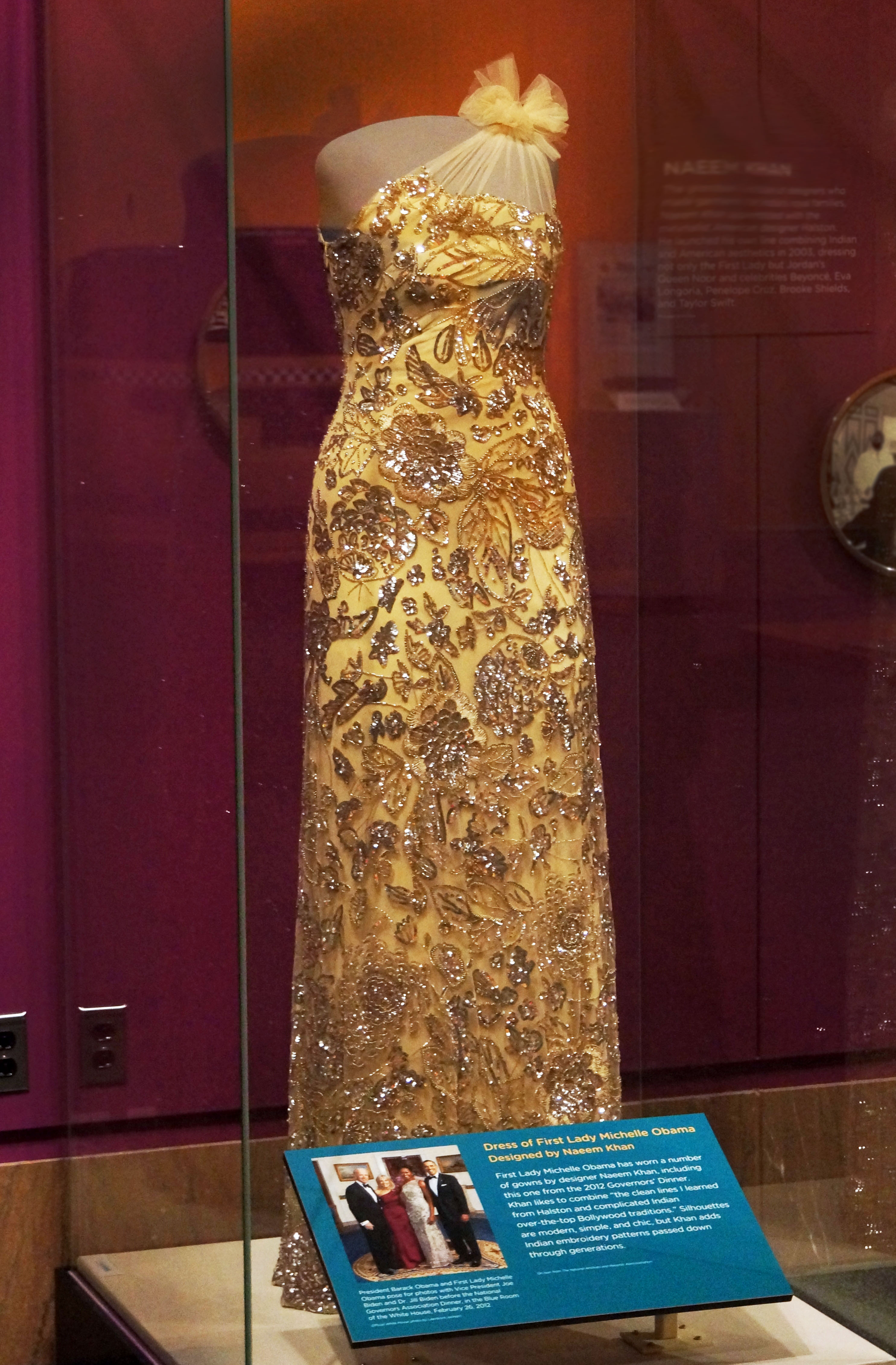
A dress lent to the Smithsonian belonging to Michelle Obama, designed by Mumbai-born Naeem Khan. Photographed by John Gibbons, Smithsonian Institution.
Interesting. Why was that? It was a lack of familiarity of what this could be and could do for our community. Some [members of the Indian community], understandably, don’t have a longstanding relationship with the Smithsonian. They had a lot of questions, like ‘What is this going to look like?’ ‘Are we -- insert any subgroup’s name -- going to be represented?’ A lot of the philanthropy in the community is still going back to South Asia. The [idea that] we need to be represented in the national museums, really candidly, was a tougher sell.
What kind of support did you need from Indian Americans? We were basically starting from scratch. The Smithsonian owns works of art from India: statues, fragments, textiles. But they are all from India. There was nothing [we could use] in the national collection, which is more than 120 million objects. That’s a really big deal.
Calls [were] put out around the country for people to share everything they have, from documents to photographs to historical objects to works of art, to everyday objects like shoes. There was nothing that represented our history here in the United States -- Indian history. We received and are receiving many things now that the exhibition is open. People went to their closets, their attics, their basements. The exhibitions in the Smithsonian incorporate some of those things as well as some things we sourced from academics, libraries and other repositories around the country.
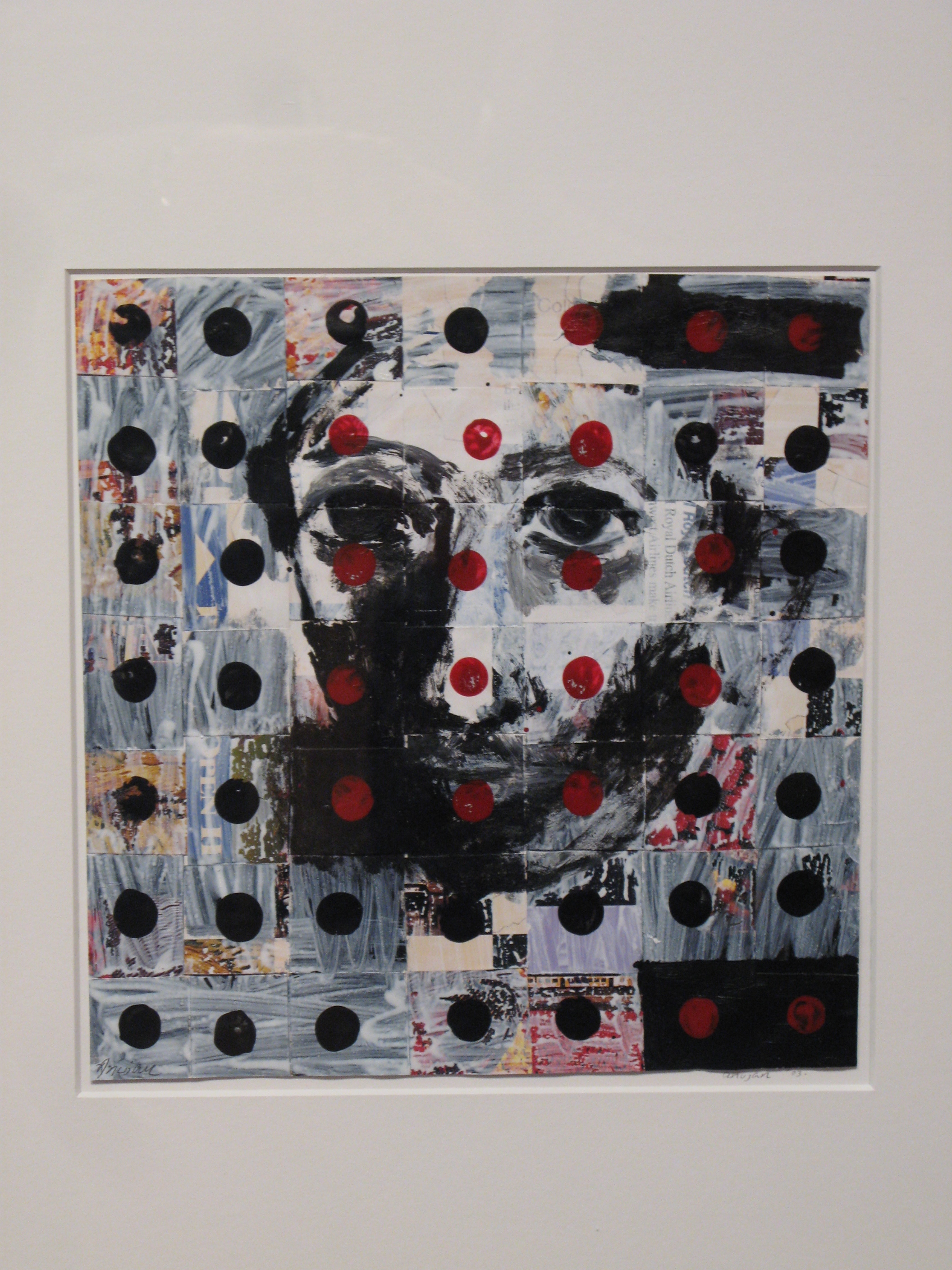
‘Dots,’ by painter Anujan Ezhikode. Photographed by John Gibbons, Smithsonian Institution.
Do you have a favorite find? There’s a piece of art -- it’s a painting called Dots. It’s by a Brooklyn-based artist named Anujan Ezhikode. He created it in response to a number of racially motivated acts of violence and hate crimes that happened in New Jersey in the 1980s, and also post 9/11, in terms of targeting communities based on stereotypical features -- turbans or beards.
He was thinking about a history where the dot -- the bindi -- had been appropriated and used to target Indian American communities, not just in the extent of violence. So many Indians living and working in the U.S. are asked about “the dot.” What does it mean? Does everyone have the dot? Is it permanent? Is it a tattoo? [The painting features] a series of dots that are screened over the image of a human being. It’s an interesting meditation.
Was it a conscious choice to solicit original creations as well as artifacts? Normally exhibitions that are based in history don’t include works of art, but that‘s something as a curator I felt really strongly about. The exhibition deals with questions of race, identity, migration, who belongs. I wanted visitors to walk away contemplating those questions. I didn’t necessarily want to do it by constructing text panels about “who is American.”
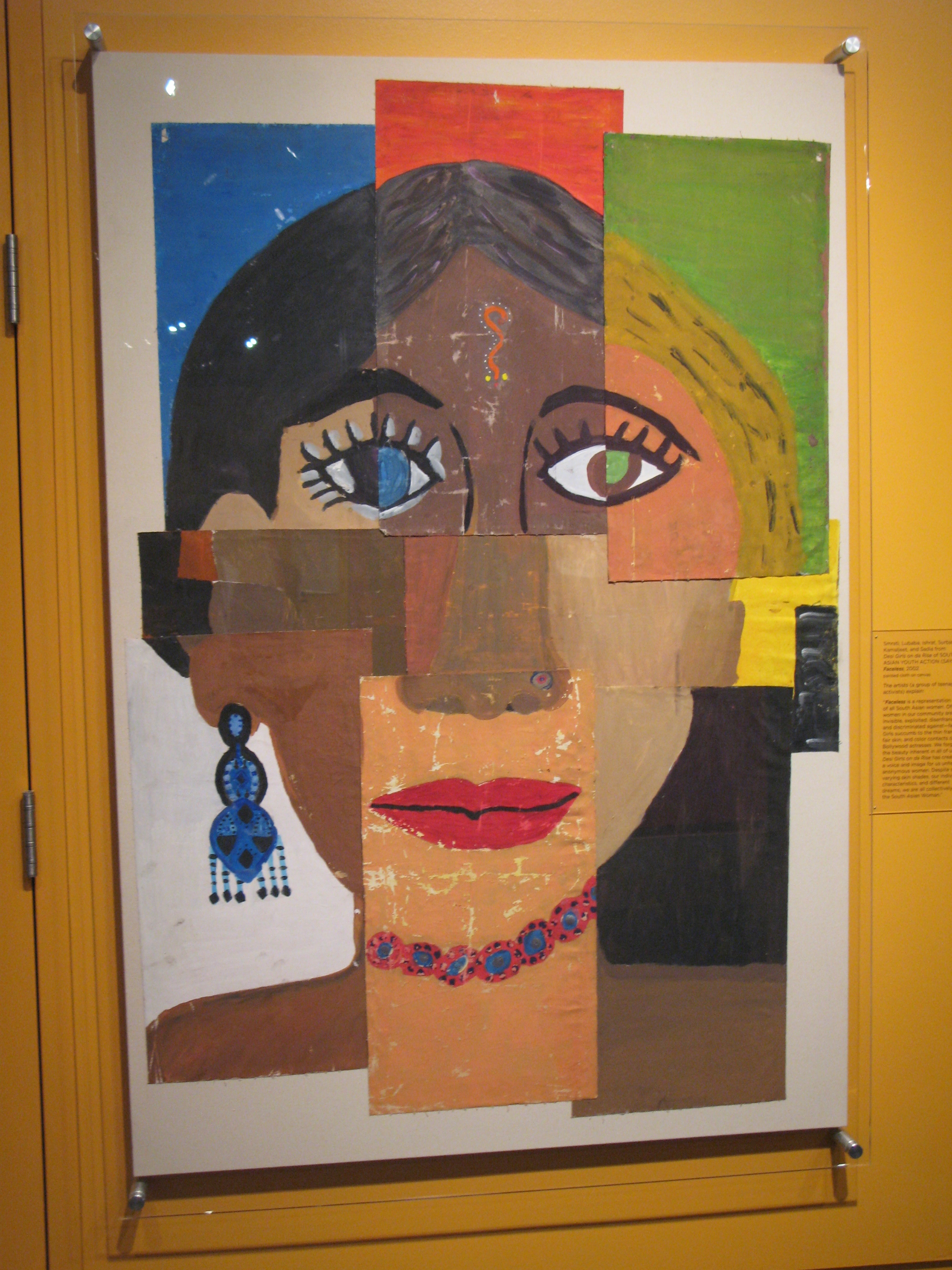
“Faceless,” by the teenage artist collective, Desi Girls on da Rise. In a statement, the artists blame the “fair skin, and color contacts of Bollywood actresses” for flattening the concept of beauty among South Asian girls. The painting stands for the “varying skin shades...and different dreams” of “unheard, anonymous women.” Photographed by John Gibbons, Smithsonian Institution.
I have some sense from your name, but what’s your ethnic background? My parents are immigrants. My father came in 1965 and my mom in 1970. I grew up outside of Chicago, answering a lot of questions that I think many people in my generation did, in terms of explaining Indian culture. Frequently answering where are you from, having to explain a lot of aspects of why I ate the food I did, or wore the clothes I did on certain occasions, or wasn’t speaking English in my home.
Of course, the exhibition was personally really meaningful for me. One [goal] was to honor the struggles of my parents’ generation and those that came before them. Discrimination, hardship, coming here with not very much, and building a life from scratch, those kinds of stories were told to me growing up and I know it wasn’t easy.
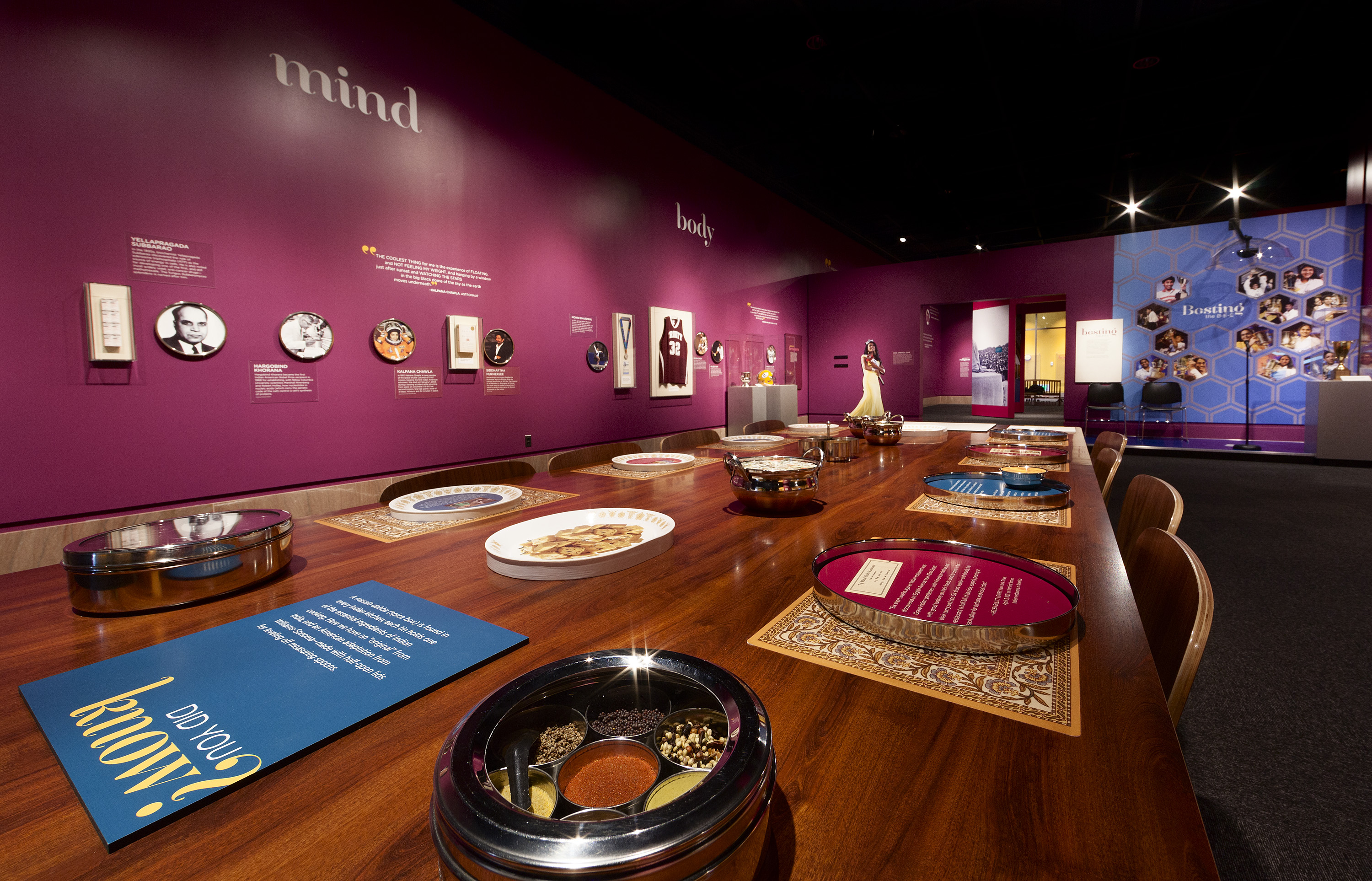
A display on cuisine includes an example of a spice container commonly found in South Asian homes. Photographed by John Gibbons, Smithsonian Institution.
[But I also wanted to] honor what many of that generation have told me, which was that America was good to them. It provided a chance to build a life and do it on their own terms. Another huge motivation, and this has been reaffirmed when I’ve been in the gallery, is children. For them to understand that their roots are very deep. Children who have Indian ancestry but may not have strong ties to India. For example, mixed race families, or kids growing up in communities where there are not a lot of Indian families. My hope is if they are asked the question, ‘Where are you from?,’ that won’t be so uncomfortable or antagonizing as what previous generations faced.
What has the response been from the community so far? Some of the reactions are critical. Mostly of the kind that there’s not enough representation of, as I said, insert whatever religious, ethnic groups. There's a feeling that this is our one shot. It’s been seven years in the making -- when will the next one be?
That seems like an unusually long time for an exhibition to develop. There really wasn’t any dedicated staff on it. They needed to raise money in order to hire staff. And to be fair, some exhibitions really just do take this long even if they have full time staffing. The process of writing a script takes more than a year. The design process takes almost as long. You identify gaps, it takes a while to fill them. You need to raise funds. Exhibiting is a fairly organic process in that way. Couple that with the fact that you’re doing something for the first time, and there’s some kinks along the way.
A display plate embedded with a passage from Jhumpa Lahiri’s “The Namesake,” describing a knockoff version of an Indian snack made with whatever ingredients were available in a 1970s American store. Photographed by John Gibbons, Smithsonian Institution.
You laid groundwork. We had someone loan us an object and it took several dozen conversations for that person to feel comfortable letting us borrow it. They don’t know what the Smithsonian is going to do. So having them see that, hopefully, the Smithsonian has respectfully cared for their object and their art, it’s not just a start in terms of the exhibition, but in terms of collections.
What was the object? It’s a sign from one of the first Indian-owned motels in the country, Hotel Alder, in San Francisco in the 1950s. The sign was loaned to us by the Patel family, who has been in the motel business for a long time. They’re part of the wave of immigrants credited with reviving the industry. The statistic is that 50 percent of motels are today owned by descendants of the family who owned Hotel Alder.
And they’d held onto that sign. Yeah, I mean, it was dusty and fragile. They’d stored in their home. We built a custom crate to ship it across the country. It’s really large, [around] 7 feet long. We’re really pleased to have it. We’ve recreated a motel lobby as part of the exhibition and it’s hanging there. It took a number of conversations for us to achieve a mutual understanding that this was a really important part of our history and something we wanted to share.
What’s the next step? It’s been a long time coming, and it’s going to be the first of many [such exhibits]. It’s not just Indian Americans that feel like it’s about time that we’re represented. So many communities are feeling that way. Some of them are still waiting for their turn, for their history to be represented. This is the mandate, for the Smithsonian to continually tell American history, and there’s no way we’re going to do a good job of that while leaving so many people out.
Correction: A previous version of this article misstated the year Ms. Momaya's father moved to the U.S.

